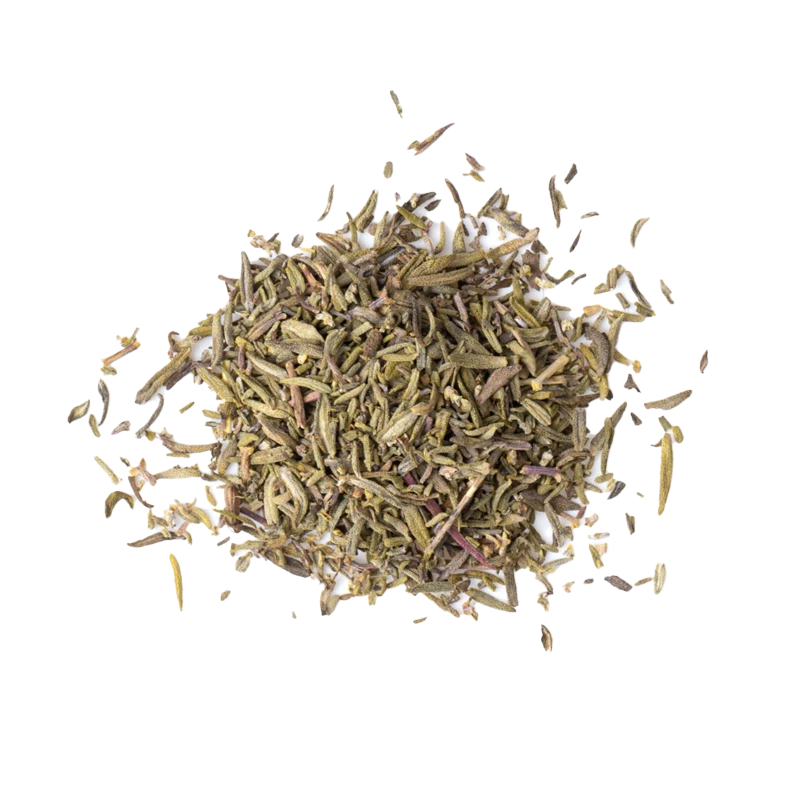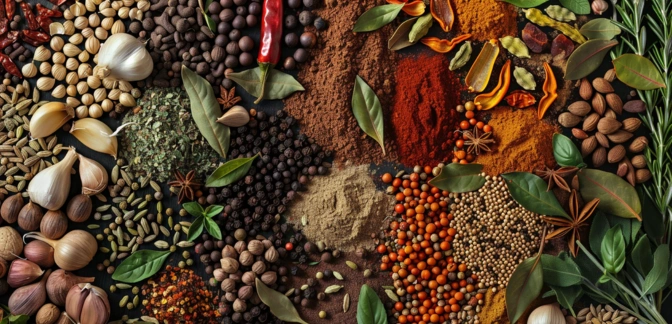Thyme — Nutrients, Health Benefits, and Shopping Tips

Written by Listonic Team
Last update on September 4, 2024
Thyme nutrients
Nutrition facts
Amount per 100 g
Calories
🔥 276 kcal
| Nutrition per: 100 g | Value | % Daily Value* |
|---|---|---|
| Carbs | 64 g | 23.27% |
| Fiber | 37 g | 132.14% |
| Sugars | 2 g | 4% |
| Glycemic Index | 0 | - |
| Protein | 9 g | 18% |
| Sodium | 55 mg | 2.39% |
| Total Fat | 7 g | 8.97% |
*The % of Daily Value (DV) tells you how much a nutrient in a serving of food contributes to a daily diet. 2,000 calories a day is used for general nutrition advice.
37 g
✅ High Fiber Content
Thyme facts & tips
Health benefits
- Rich in antioxidants, such as thymol and carvacrol, which help protect the body from free radicals and reduce inflammation.
- Supports respiratory health due to its antimicrobial properties, which can help relieve coughs and bronchitis.
- Contains essential vitamins and minerals such as Vitamin C, Vitamin A, iron, and manganese, which support overall health and well-being.
- Supports digestive health by promoting the production of digestive enzymes and reducing symptoms of indigestion.
- Enhances flavor in dishes, making healthy foods more enjoyable and palatable.
Health risks
- Potential for allergic reactions in some individuals, particularly those allergic to plants in the Lamiaceae family, causing symptoms like itching, swelling, or difficulty breathing.
- Potential for digestive discomfort such as stomach upset or diarrhea when consumed in large quantities, particularly in sensitive individuals.
- Potential for interactions with medications particularly blood thinners or medications affecting blood pressure, as thyme may have mild anticoagulant or hypotensive effects.
- Risk of contamination with pesticides or harmful bacteria if thyme is not properly washed or sourced from reputable suppliers.
How to choose thyme
Thyme should have small, densely packed leaves on firm stems, with a strong, earthy scent indicative of its essential oils. The color should be a vibrant green, without any signs of yellowing or wilting.
Avoid thyme that is dry or crumbling, as this indicates it is past its prime. Thyme with a weak aroma or moldy appearance should also be avoided, as it will not add the desired flavor to your dishes.

How to store thyme
Fresh thyme should be refrigerated, wrapped in a damp paper towel inside a plastic bag. Chilling helps preserve its flavor for up to two weeks.
Moisture can cause thyme to mold. Avoid washing before storage, which can lead to spoilage. Always use a dry cloth to pat it down if washing is necessary. Proper trimming before storage enhances its shelf life.
✅ Extra Tip
How long does it last?
Thyme can last for 1-2 weeks in the refrigerator when stored in a plastic bag with a paper towel to absorb excess moisture. For longer storage, thyme can be dried and kept for up to 6 months in an airtight container.
What to do with leftovers?
Leftover thyme can be used in a variety of culinary and non-culinary ways. In the kitchen, thyme adds a subtle, earthy flavor to dishes like roasted meats, vegetables, soups, and stews. It can be used fresh or dried and is often added early in the cooking process to allow its flavor to infuse the dish.
Beyond cooking, thyme has several practical uses. It can be brewed into a tea, traditionally used to help relieve coughs, sore throats, and respiratory issues due to its antimicrobial properties. Thyme can also be used in homemade cleaning products as a natural disinfectant or added to bath sachets for a soothing soak. Fresh thyme’s essential oils can be used in aromatherapy to promote relaxation and reduce stress. Additionally, thyme can be used in homemade potpourri or sachets to add a fresh, herbal scent to your home.
👨⚕️️ Medical disclaimer
Discover products from other categories
Listonic Team
Fact-checked
Our editorial team checked this article to make sure it was accurate at the time of publishing it.
Get the top-rated shopping list app on your phone!







